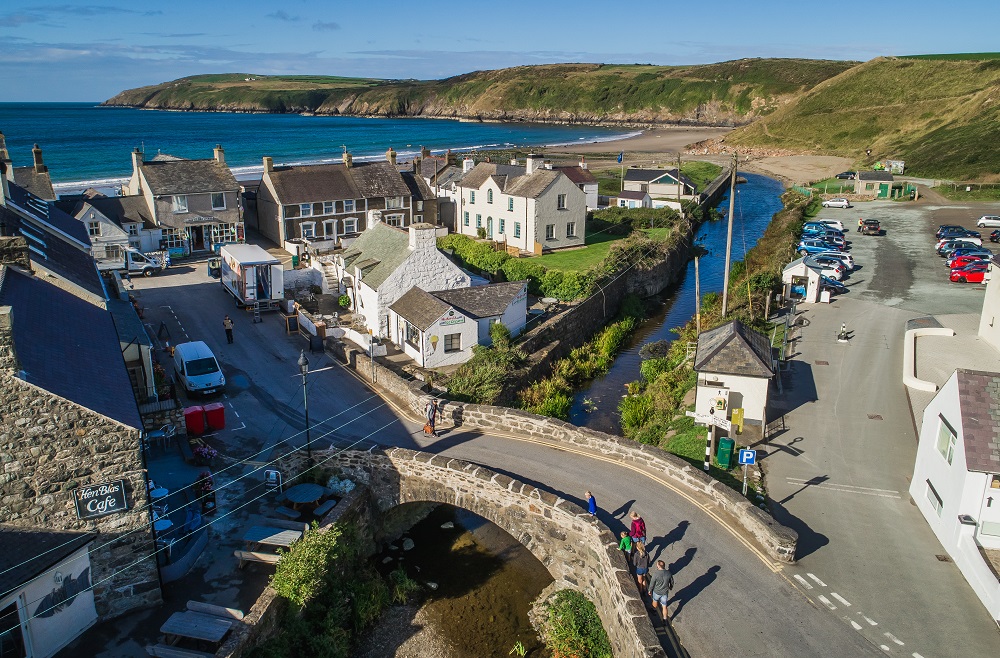Over one in 10 residential properties in Abersoch & Aberdaron are holiday homes – ONS report

Abersoch & Aberdaron on the Llyn Peninsula has the highest proportion of holiday homes in Wales, a new analysis has revealed.
The figures compiled by the Office for National Statistics (ONS) are based on the 2021 census for England and Wales and confirm there were 153 holiday homes per 1,000 residential properties in the Gwynedd holiday-hot spot.
Abersoch & Aberdaron posted the second highest proportion of holiday homes recorded in England and Wales, behind only Salcombe, Malborough & Thurlestone on the south coast of Devon, with 172 holiday homes for every 1,000 addresses.
The ONS report shows that around 70,000 second addresses across England and Wales are used as holiday homes, mainly concentrated in coastal areas, national parks and Areas of Outstanding National Beauty.
Cornwall
Cornwall had the highest number of holiday homes at the time of the census (6,080), followed by Gwynedd (2,590), Dorset (2,490) and North Norfolk (2,195)
But South Hams in Devon was the local authority with the highest concentration of holiday homes, with 44 for every 1,000 addresses.
South Hams has a long coastline and includes the southern part of the Dartmoor National Park as well as the South Devon Area of Outstanding Natural Beauty.
It also contains Salcombe, Malborough & Thurlestone, with its chart-topping 172 holiday homes for every 1,000 properties.
There are seven local areas across Wales and England where at least one in 10 residential properties are used as holiday homes.
Along with Salcombe, Malborough & Thurlestone in Devon, and Abersoch & Aberdaron in Gwynedd, they are Trebetherick & Whitecross (140 per 1,000) and Padstow & St Issey (121 per 1,000) in Cornwall; Brancaster, Burnham Market & Docking (130 per 1,000) and Hunstanton (104 per 1,000) in King’s Lynn & West Norfolk; and Wells & Blakeney (109 per 1,000) in North Norfolk.
The list excludes the Isles of Scilly, which has a very small resident population.
Census data on second addresses includes only people who said they spend at least 30 days a year at the property.
The total number of second addresses used as holiday homes, and people who use them, are likely to be higher, the ONS said.
Ownership
New laws regulating the ownership of second homes were passed recently by both the Welsh and UK parliaments.
The Welsh Government recently increased its own letting requirements so properties must be rented out for at least 182 days a year, and available for at least 252 days.
It has also raised the maximum council tax premium that councils can apply to second homes to up to four times the standard rate.
Since April 2023, second homeowners in England have to prove holiday lets are being rented out for a minimum of 70 days a year, and are available to rent for at least 140 days, in order to qualify for small business rates relief.
The census also reveals that around 79 people per 1,000 local residents visited holiday homes in Gwynedd from another local authority, the highest proportion relative to population for any authority in England and Wales.
Anglesey was the second most popular destination, with 63.3 people per 1,000 local residents coming to holiday homes in the area from elsewhere.
North Norfolk (60.0 people per 1,000 local residents), South Lakeland in Cumbria (58.4), the Isles of Scilly (58.3) and East Lindsey in Lincolnshire (54.4) were the next most popular.
Earlier this week councillors in Gwynedd were told the area is experiencing an “astonishing” rise in homelessness, with soaring property prices and the proliferation of second homes and holiday lets among the key causes.
A report from the council’s cabinet member for housing, councillor Craig ab Iago, revealed that 65% of Gwynedd residents, in 2020 could not afford to buy a home.
Mr ab Iago also said more than 40% of the region’s housing stock on the market in 2019 went to second home buyers and around 15% of the housing stock was “used as bolt holes or investment properties – rather than homes”.
Support our Nation today
For the price of a cup of coffee a month you can help us create an independent, not-for-profit, national news service for the people of Wales, by the people of Wales.







But wasn’t Abersoch a 1970’s plan to encourage holiday home ownership and is a success. 1 in 10 is a pretty low number so plenty of locals
Sounds like the county council’s new policy is beginning to produce results. Certainly a lot of 2nd-home owners have been selling up. But these newly-freed-up properties are still unaffordable to local people because of a housing market free-for-all. Further legislation required.
I can’t understand why anyone would buy a holiday home in Wales.